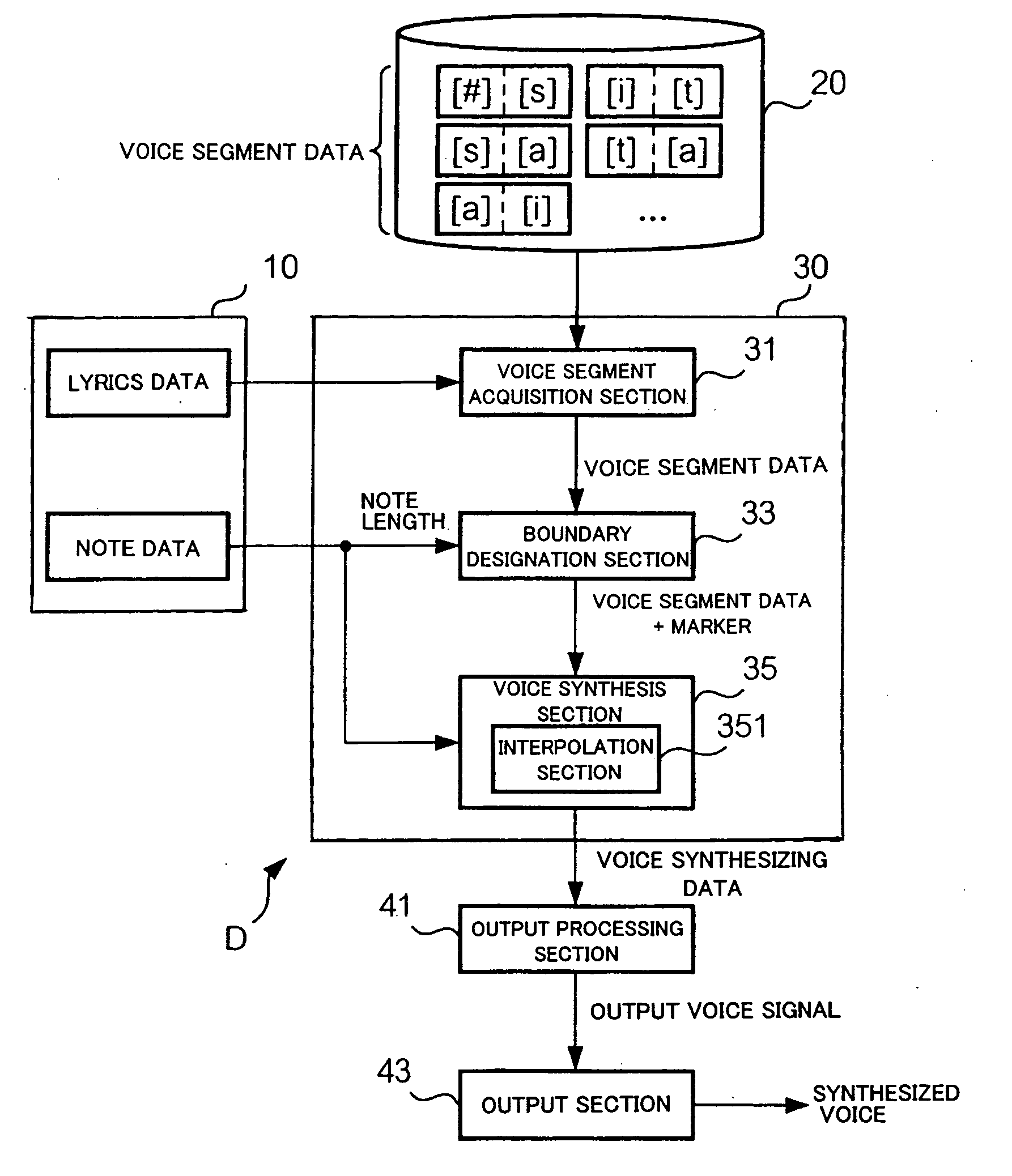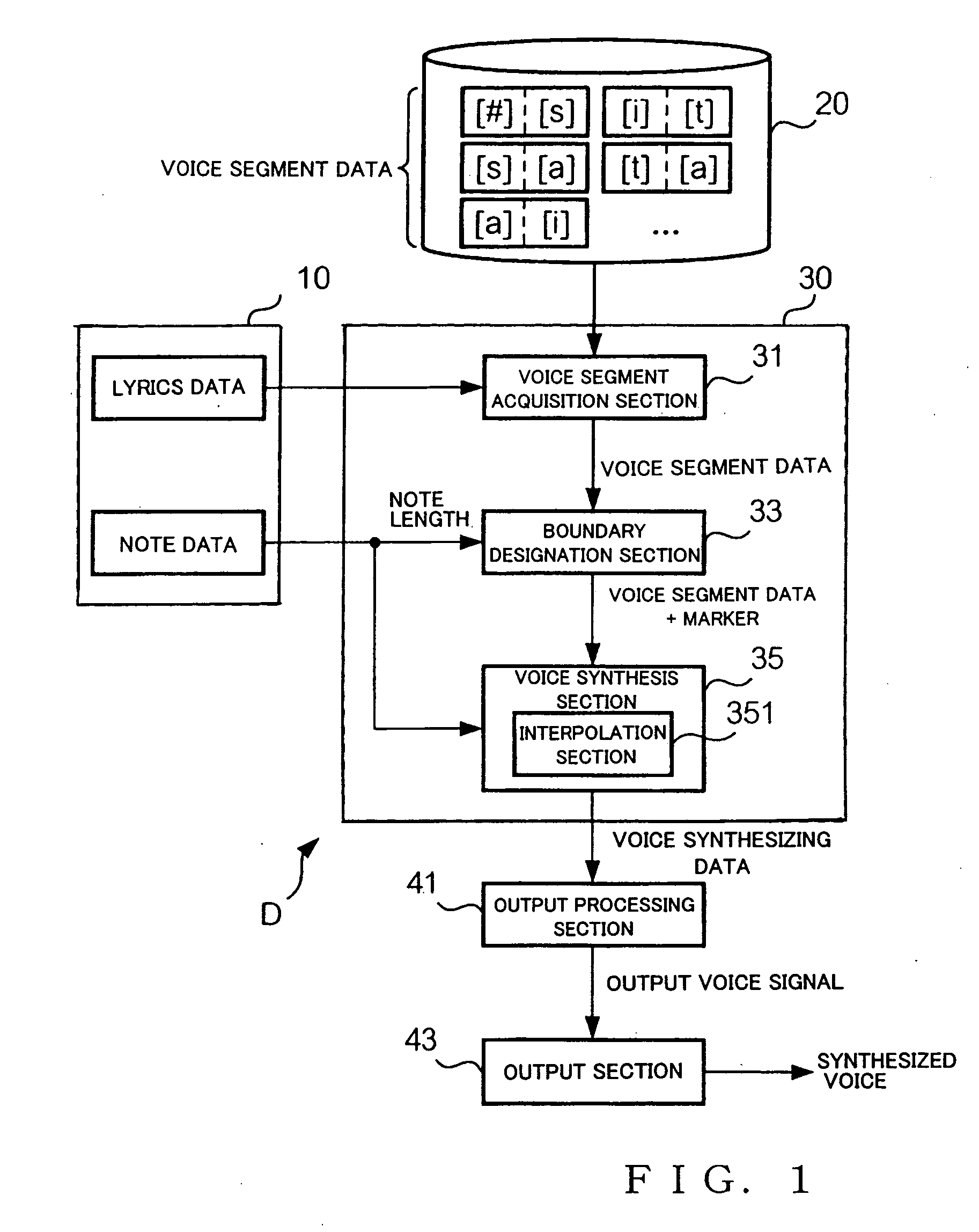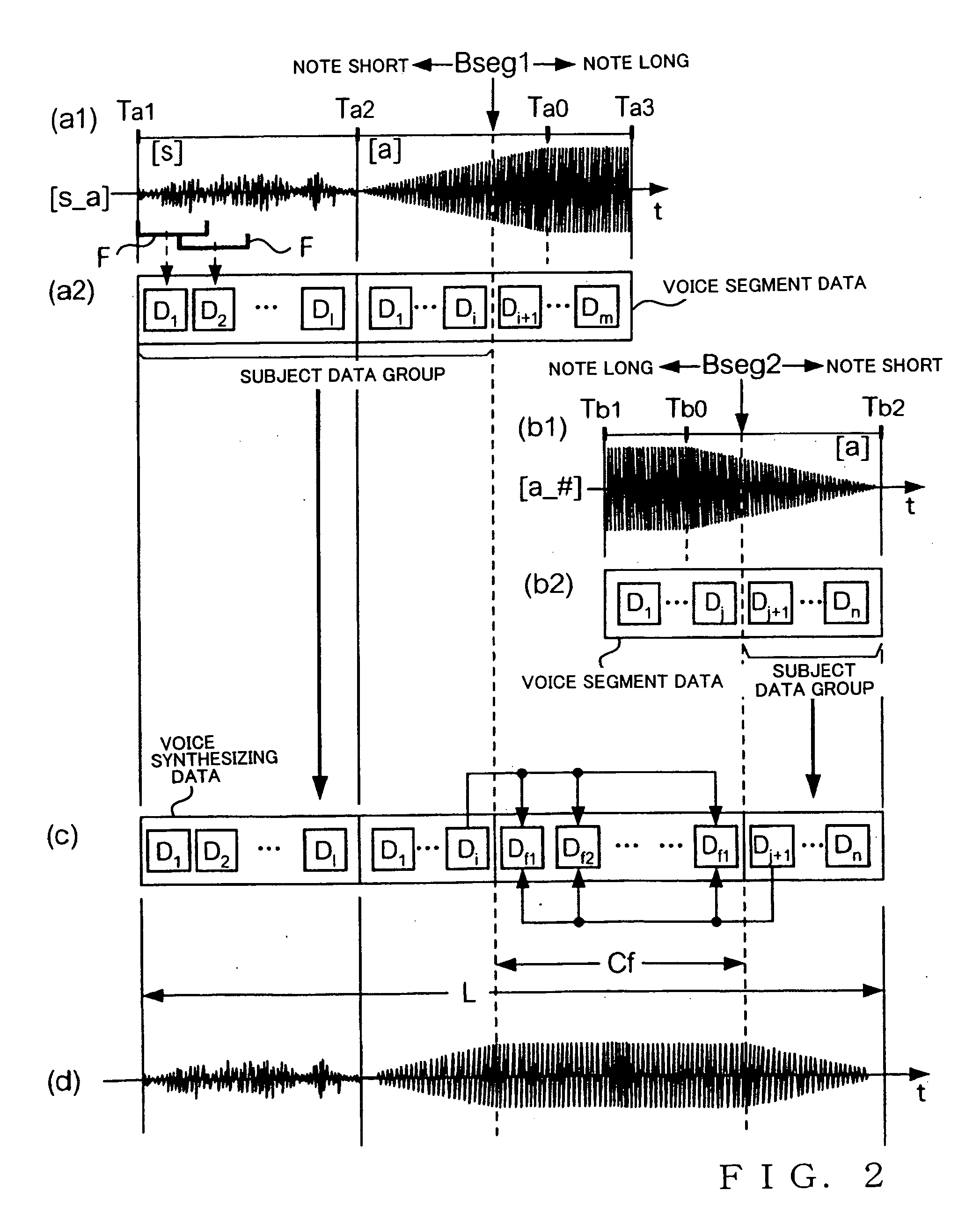Voice synthesis apparatus and method
a voice and voice technology, applied in the field of voice synthesis techniques, can solve the problems of requiring a great amount of labor to create the voice segments, not necessarily synthesizing a natural voice, and not appropriately synthesizing subtle voices like those uttered with the mouth
- Summary
- Abstract
- Description
- Claims
- Application Information
AI Technical Summary
Benefits of technology
Problems solved by technology
Method used
Image
Examples
first embodiment
A-1. Setup of First Embodiment
[0027] First, a description will be given about a general setup of a voice synthesis apparatus in accordance with a first embodiment of the present invention, with reference to FIG. 1. As shown, the voice synthesis apparatus D includes a data acquisition section 10, a storage section 20, a voice processing section 30, an output processing section 41, and an output section 43. The data acquisition section 10, voice processing section 30 and output processing section 41 may be implemented, for example, by an arithmetic processing device, such as a CPU, executing a program, or by hardware, such as a DSP, dedicated to voice processing; the same applies to a second embodiment to be later described.
[0028] The data acquisition section 10 of FIG. 1 is a means for acquiring data related to a performance of a music piece. More specifically, the data acquisition section 10 both acquires lyric data and note data. The lyric data are a set of data indicative of a st...
second embodiment
B. Second Embodiment
[0055] Next, a description will be made about a voice synthesis apparatus D in accordance with a second embodiment of the present invention, with reference FIG. 7. The first embodiment has been described above as controlling a position of a phoneme segmentation boundary D in accordance with a note length of each tone constituting a music piece. By contrast, the second embodiment of the voice synthesis apparatus D is arranged to designate a position of a phoneme segmentation boundary in accordance with a parameter input via the user. Note that the same elements as in the first embodiment will be indicated by the same reference characters as in the first embodiment and will not be described to avoid unnecessary duplication.
[0056] As shown in FIG. 7, the second embodiment of the voice synthesis apparatus D includes an input section 38 in addition to the various components as described above in relation to the first embodiment. The input section 38 is a means for re...
PUM
 Login to View More
Login to View More Abstract
Description
Claims
Application Information
 Login to View More
Login to View More - R&D
- Intellectual Property
- Life Sciences
- Materials
- Tech Scout
- Unparalleled Data Quality
- Higher Quality Content
- 60% Fewer Hallucinations
Browse by: Latest US Patents, China's latest patents, Technical Efficacy Thesaurus, Application Domain, Technology Topic, Popular Technical Reports.
© 2025 PatSnap. All rights reserved.Legal|Privacy policy|Modern Slavery Act Transparency Statement|Sitemap|About US| Contact US: help@patsnap.com



